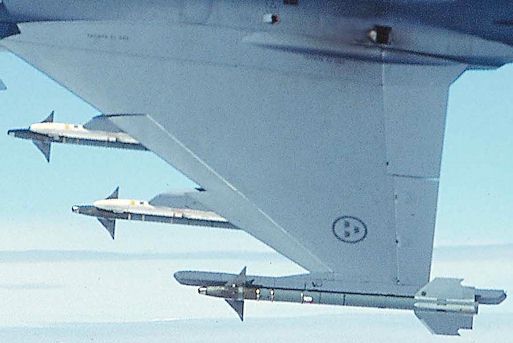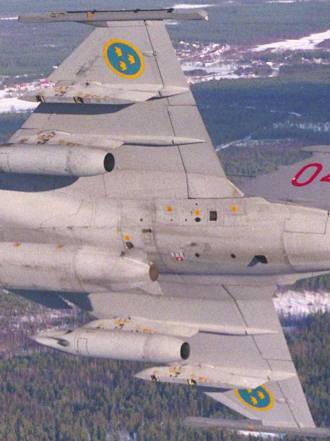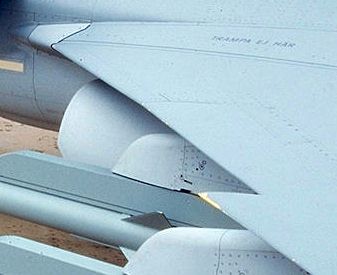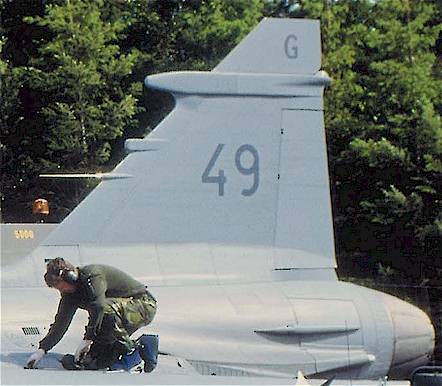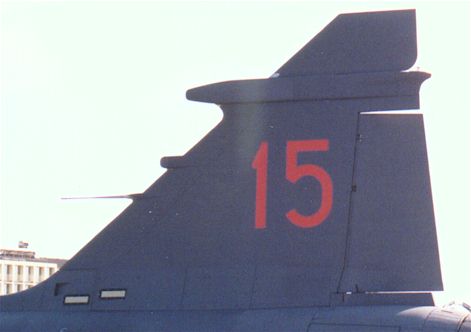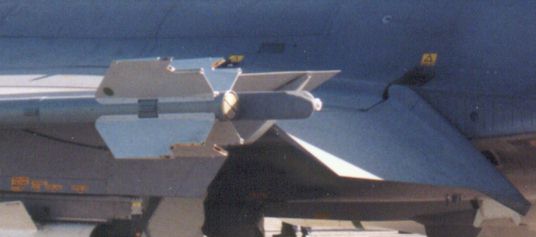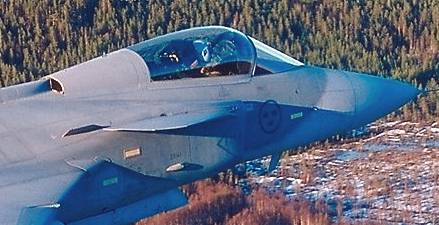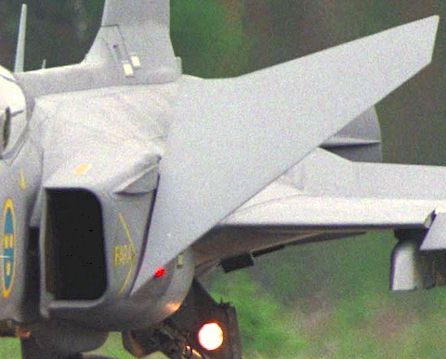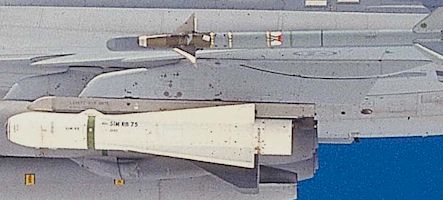Wing
by Martin Waligorski
Delta Force
Another in-flight shot gives a good idea about wing shape. The upper surface is very clean…
Photo: SAAB
…unlike the wing’s underside, where all hinges and pylons have resulted in long chordwise fairings.
Photo: SAAB
Close-up of the dogtooth on the leading edge. Photo: SAAB
Control Surfaces
At the Rear and in the Front
Rearward view showing fully deployed flaps, left elevon up, right elevon neutral and rudder to the right.
Photo: Björn Ringholm
Two views of the fin, showing the multiple antennae. The big ”box” contains a radar warning system. The probe is an backup pitot tube. Photo: SAAB + Björn Ringholm
Close-up view of the landing flap. Photo: Björn Ringholm
The canard wing has become SAABs hallmark since J 37 Viggen introduction into service back in the early 1970s. With JAS 39, SAAB has pushed the concept even further. The combination of an unstable canard layout and delta wing gives the aircraft very good take off and landing performance and superb flying characteristics. The totally integrated avionics makes it also a ”programmable” aircraft.
One intriguing detail is a small fin behind the canard. It’s exact function is so far kept secret. A qualified guess is that it is some form of vortex generator. Photo: SAAB
One unique feature of the new canard design is to act as air brakes. After the touchdown, the entire canard wing can be rotated to near-vertical position thus forming a formidable air brake. It also pushes the aircraft down onto the runway, permitting for more effective action of the traditional wheel brakes.
It is quite a spectacle when viewed live, and, more importantly, allows for landing runs of barely… 500 metres.
Photo: SAAB
Underwing Stores and Armament
The Sting
The missile commonly seen on Gripen’s wing tips are AIM-9L Sidewinders (Swedish designation Rb 74). The one seen here is a mock-up, painted in green and lacking the front stabilizers. Under the wing there are two Rb 75s Maverick air-to-ground missiles. More about this weapon below.
Armament in the Swedish Air Force is color-coded the following way:
- Yellow – live
- White – light flares
- Brown – live propellant, no warhead
- Blue – Training weapon or fire marker
- Green – mock-up
Photo: SAAB
This is ARAK unguided ground missile pod produced by Bofors, containing blind (green) 135 mm rockets. This weapon is currently being phased out, as it requires the aircraft to approach the target at a too short distance for the modern countermeasures. Photo: SAAB
Again a AGM-75 Maverick, designated Rb 75 in the Swedish Air Force.
This specimen is a simulation missile (you can read SIM RB 75 on the missile’s body), featuring a live TV targeting system but no warhead. Also, the stabilizing fins at the rear are missing, so this one couldn’t fly… Photo: SAAB
In ”pure” fighter configuration, the JAS 39 can carry six AIM-9L Sidewinders. Photo: SAAB
The inner weapon is Swedish-produced Rb 15F, a radar-guided anti-ship missile.
On the outer pylon, an Rb 75 Maverick again. this time with control fins. This might be an infrared-seeking version, as indicated by the solid nose. Photo: SAAB
This article was originally published in IPMS Stockholm Magazine in April 2000.
